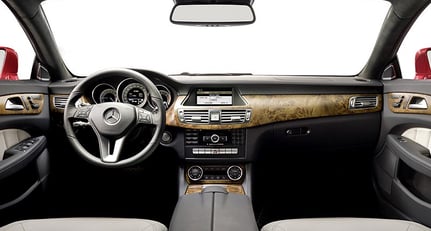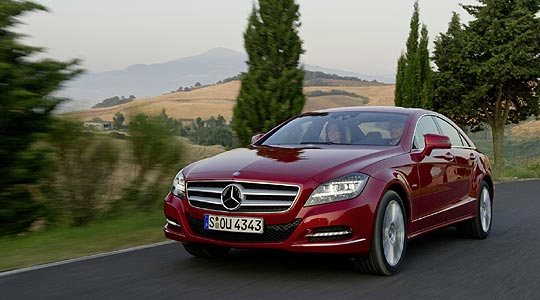
A four-door coupé. It sounds a contradiction in terms, especially if the rear doors are to lead to seats capable of accommodating fully-grown people. Rover tried it aeons ago with the Three-Litre Coupé, then no one bothered for a very long time. Until the end of 2003, in fact, when Mercedes-Benz revealed the CLS.
A niche too far? Maybe; but the CLS looked like a concept car made real, the flourish of a designer's marker pen rendered in three-dimensional metal. From the side it resembled an automotive banana, varying degrees of convex curvature giving the sense of a car almost hurtling out of the ground. It looked extraordinary, but the rear seat was usable if a touch tight on headroom. Mercedes has sold 170,000 of them.
But, futuristic as it was, the CLS has pointed only a partial way to those Benzes that arrived after it. The fixation with a retro-looking bulge over the rear wheelarch, into which flows a descending flank line, did not fit with the banana look. That bulge started with the current S-class and has adorned every new Mercedes since. And now it appears on the second-generation CLS. How can that work, without spoiling the whole CLS notion?
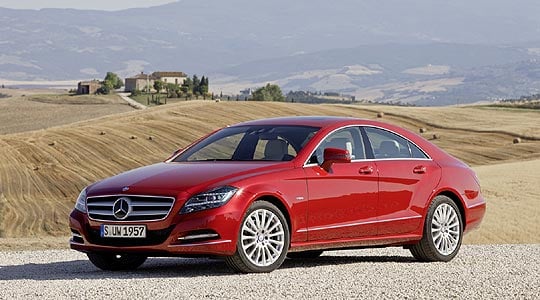
You can see it here. The outline of the side windows is a little flatter along its base. The tail is still long and extravagant. Convex curvature is still the signature, but that arch-bulge has been forced in regardless. Look at the rear door, where several contours meet. Close up, it looks as if it has simply been kicked in by a heavy foot. From further away, however, the CLS style does hang together. Let's just say that when you see it on the morning of Day Two, it makes more sense than it did on Day One, even if the original's purity has gone.
The nose has morphed from sloping and discreet to upright and bold. (Mandated pedestrian impact-mitigation is why.) Despite that, the new shape is slightly more aerodynamic overall. The new CLS is inevitably slightly bigger, which among other things makes for a roomier rear cabin albeit still snug around the head, but the bonnet, boot and front wings, the frameless doors and the rear shelf are all of aluminium to keep the weight down.
Four engines are offered to begin with, including the first four-cylinder to be found in a CLS. This is the 250 turbodiesel, actually of 2143cc despite the 2.5 litres promised by the name, which produces an impressive 204bhp and returns a 134g/km CO2 figure. Two V6s bear 350 numbering, a 2987cc diesel with 265bhp and an epic 457lb ft of torque, and a 3498cc (at last, a number which makes sense) petrol engine with 306bhp. Topping the range, at least until the AMG version arrives, is the CLS 500 with 408bhp from its 4663cc V8. Its peak torque, however, is lower than the 350 CDI's.
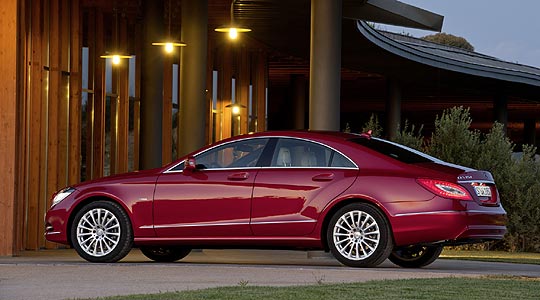
You might expect the CLS to be simply a reskinned E-class with a more intimate interior, but it's not that simple. As with the old car, the new one has non-E-class front suspension. Previously it used SL components, this time they are CLS-specific. The basic design follows that of the E-class but the dimensions are different, primarily to give a wider track. Air suspension with Comfort and Sport modes is optional, as you would expect.
This is a truly lovely car in which to sit. Every surface is made of what it looks to be made of. The textures are inviting, the pieces fit together perfectly. All is solid and functional, but stylish with it; the square-faced central clock is particularly pleasing. This is a proper plush-Benz cabin. Two separate and generous rear seats flank a central tunnel with roller-shutter storage boxes, while the front seats can be had with the Active Multicontour package which will massage your back or squeeze the outer side bolsters (with a choice of two thorax- and thigh-displacements) when you steer into a corner. Fun at first, this soon becomes tiresome because the effect is out of all proportion to the requirement.
An intellect-battering list of 12 standard or optional safety systems, mostly suffixed by 'Assist', includes items such as Active Lane Keeping (it taps the brakes on one side to pull you back on track), Blind Spot warning, a coffee-requirement indicator if the car detects tiredness-related erratic driving, a speed limiter, Night View to help you avoid pedestrians and solid objects in the dark, and several others. Fortunately, they intrude little.

Also optional are LED High Performance headlamps, which combine the purer, whiter light of LEDs with the steerability and changeable beam pattern found in the cleverest xenon systems. It includes automatic dipping and return to main beam, and it even senses how close the CLS is to the car in front and dips the lights the minimum required to avoid dazzle in that car's interior mirror. As the CLS draws near, the light beam moves towards the centre of the road to help illuminate the imminent overtaking path. Brilliant, literally.
Secure in the knowledge of your CLS's near-crashproofness, you can enjoy the drive. The CLS is the first large Mercedes to have electric power steering, using a motor mounted on the rack to give a more natural feel than a column-mounted motor can usually provide. Suffice it to say that unless you knew beforehand that this is an electric system, you would probably not suspect it even though it uses its electric gearing architecture to reduce, subtly, the steering's responsiveness as speed rises. And that is very high praise.
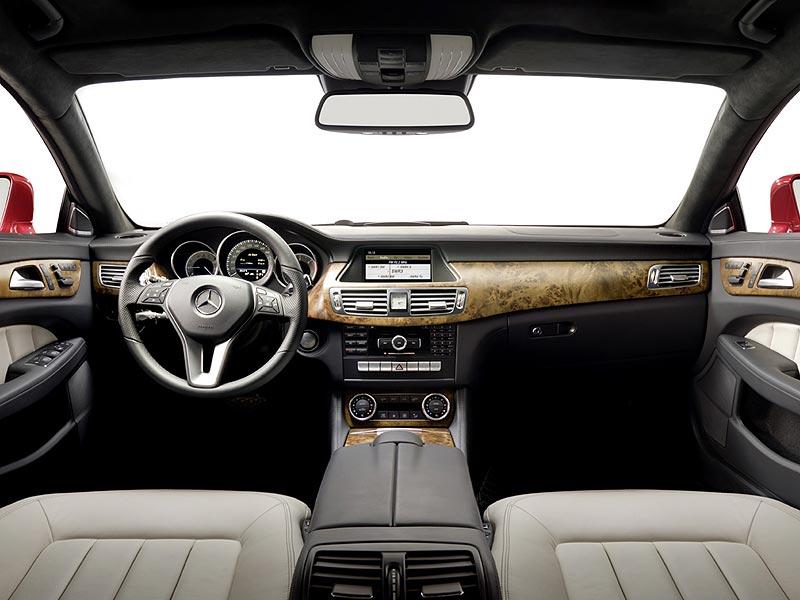
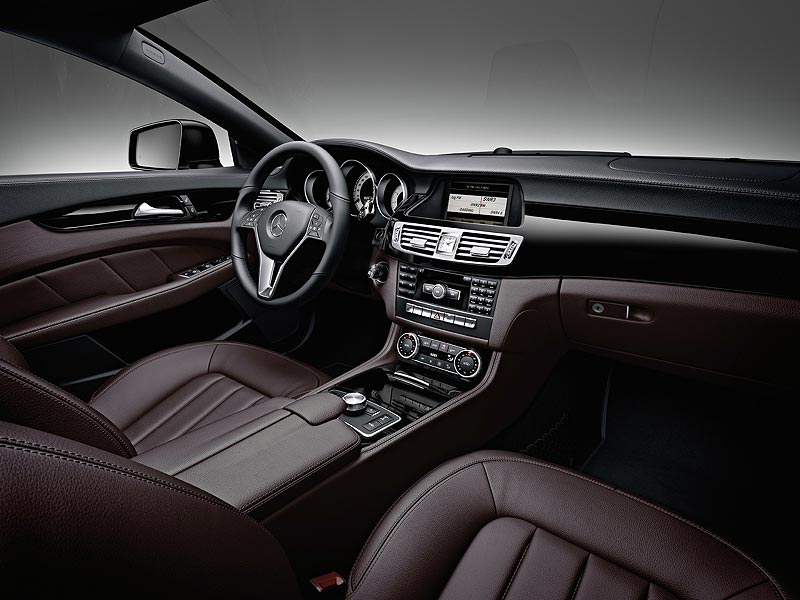
With air suspension set to Comfort, the CLS moves swiftly and serenely along the road. Set to Sport, progress is bumpier and steering is slightly sharper; on the whole, more is lost than gained. A CLS with conventional steel springs and non-adjustable dampers is in some ways the best compromise of all, remaining supple enough most of the time but allowing the steering's innate precision and credible weighting to show through. The biggest, widest wheels help the precision while doing little damage to the ride, so for once they can be recommended.
All CLSs have seven-speed automatic gearboxes, which even when manually set to a gear via the paddles will allow a lower gear to engage even if you don't want one. That's a long-standing Mercedes failing, curable only if you specify the CLS Sport which has an additional Manual transmission setting. The shifts are invariably smooth, though, and the column-mounted P/R/N/D selector stalk is ultra-easy to use.
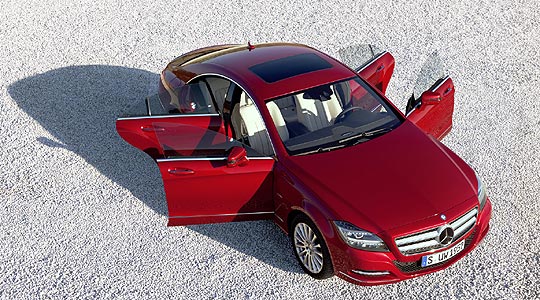
And the engines? The V8 makes the best sound and gives the greatest pace, of course. There was no four-cylinder diesel to try, but the petrol V6 proved smooth and keen, the diesel V6 barely less smooth and substantially more muscular. This last is the obvious real-world choice; it does its 155mph, it reaches 62mph in 6.2 effortless seconds yet it is rated at just 159g/km CO2. That's impressive carbon-frugality, but the truly remarkable thing is that thanks to a stop-start system, not yet available with the diesel, the petrol V6 achieves the same CO2 figure. Don't expect such parity in the real world, however, unless you spend a lot of time driving in cities.
All told, the CLS – prices as yet unfinalised – is a very likeable car. With the optional satin-finish paint, real-carbonfibre interior trim panels and polished solid-aluminium air vents it almost looks like a concept car, and with its roomier rear cabin it's more usable than before. Just one snag: if you wish to tow a caravan with your new CLS, you'll be disappointed because there's nowhere – yet – to attach a towbar. But you wouldn't do that. Would you?
Text: John Simister
Photos: Mercedes-Benz
ClassicInside - The Classic Driver Newsletter
Free Subscription!
